
Roots
The conversation about textured hair health, particularly for individuals of Black and mixed-race heritage, often begins with a contemporary search for solutions. We seek innovative products, scientific breakthroughs, and the latest trends. Yet, in this pursuit, we sometimes overlook a deep wellspring of ancestral knowledge that has sustained hair vitality for millennia.
Can traditional North African grooming rituals offer a powerful enhancement to modern textured hair health? This exploration invites us to consider how ancient practices, steeped in history and communal wisdom, speak directly to the very nature of our strands, offering pathways to strength and beauty that echo across generations.
Our journey begins not with what is new, but with what is enduring ❉ the heritage of hair care traditions from North Africa. These practices, honed over centuries, represent a profound understanding of natural ingredients and the specific needs of diverse hair types, including those with tighter coils and curls.
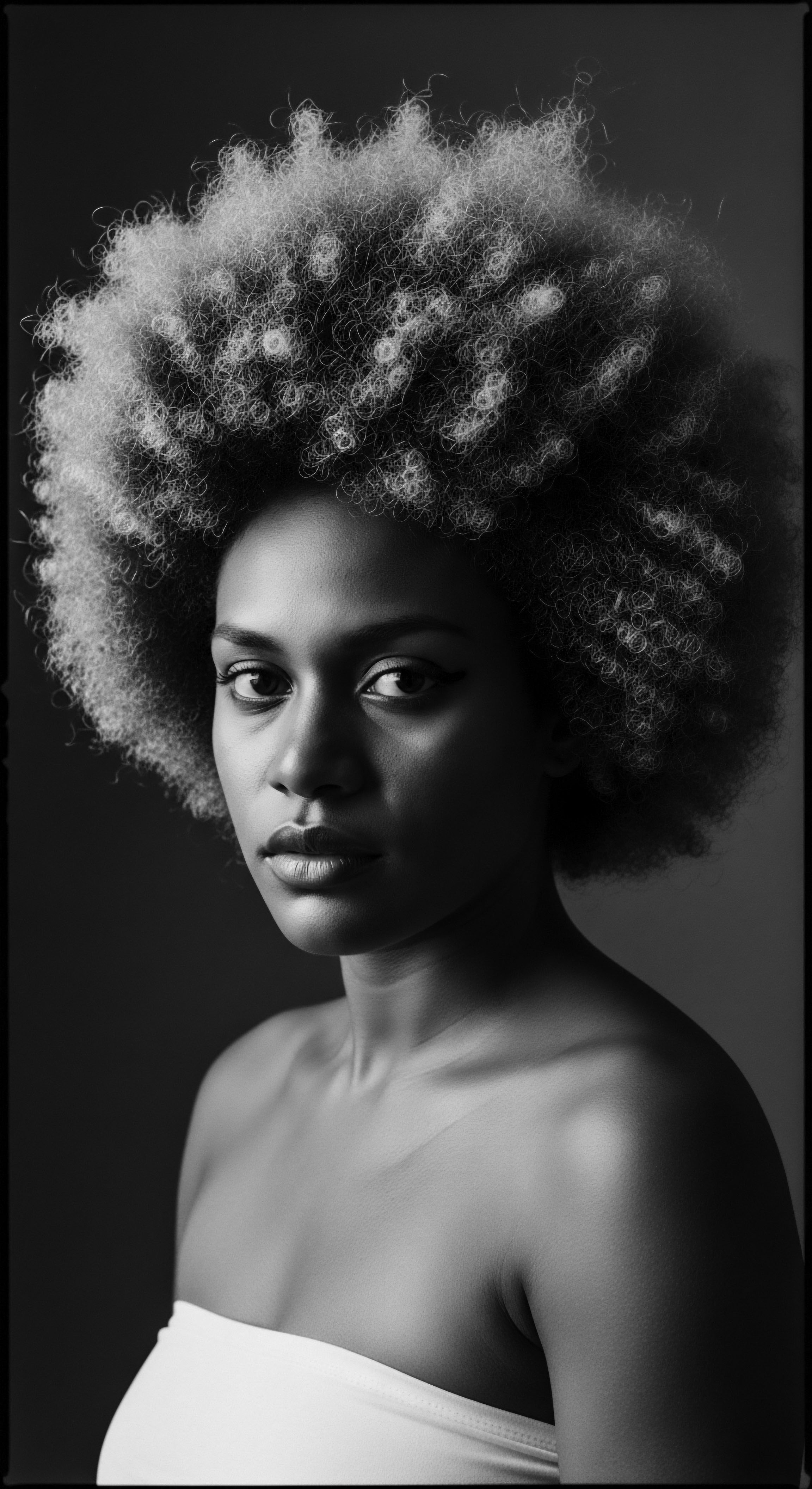
Hair Anatomy and Ancient Understanding
To truly grasp the wisdom of ancestral practices, one must first comprehend the biological canvas ❉ the hair itself. Textured hair, with its unique helical structure, presents distinct characteristics that demand particular care. The cuticle layers, the outer protective shield of each strand, may be more exposed at the bends and curves, making textured hair inherently prone to moisture loss and breakage.
This structural uniqueness means the hair requires consistent moisture and gentle handling. Ancient North African communities, through observation and inherited wisdom, developed practices that instinctively addressed these needs, long before microscopes revealed cellular structures.
Ancestral North African hair care practices intuitively addressed the unique structural needs of textured hair, prioritizing moisture retention and strand integrity.
The environment also shaped these traditions. The arid climates of North Africa necessitated strategies to combat dryness and protect hair from harsh elements. This led to a reliance on emollients, humectants, and protective styling—a testament to a deeply practical, yet ceremonial, approach to hair care.

What Did Ancestral Wisdom Perceive in Hair Structure?
Long before modern science, ancient North African cultures viewed hair not just as a biological entity, but as a living extension of self, identity, and heritage. Its health and appearance reflected one’s social standing, marital status, and even spiritual connection. The visual characteristics of Hair Texture, its sheen, and its resilience would have been paramount indicators of successful grooming, understood through an empirical lens of what worked and what preserved the hair’s vitality in challenging conditions. The very act of caring for hair was often a communal activity, passing down specific techniques and ingredient knowledge from elder to youth.

Traditional Hair Lexicon
Within North African societies, the vocabulary surrounding hair care was as rich as the practices themselves. Terms related to specific ingredients, preparation methods, and styling techniques carried cultural weight, defining a shared understanding of beauty and well-being.
- Ghassoul ❉ This term identifies a unique, saponiferous clay sourced from Morocco’s Atlas Mountains, used for centuries as a gentle cleanser and conditioner for both skin and hair. Its name, meaning “to wash” in Arabic, directly speaks to its cleansing function.
- Argan ❉ Referring to the oil extracted from the argan tree kernels, native to southwestern Morocco. This “liquid gold” has been a staple for its nourishing, moisturizing, and protective qualities for hair and skin.
- Henna ❉ Derived from the leaves of the Lawsonia plant, henna has served as a natural dye and hair strengthener across North Africa and beyond for millennia. It was appreciated for its conditioning properties alongside its aesthetic appeal.
- Karkar ❉ Though more commonly associated with Sudan and Chad, this traditional hair grease, often combining animal fat with fragrant spices, represents a historical approach to sealing moisture and promoting length retention in textured hair.
- Hammam ❉ While not an ingredient, the hammam is a traditional bathhouse ritual, particularly prominent in Morocco, where many of these grooming practices, including the application of ghassoul and argan oil, would take place in a communal, rejuvenating setting.
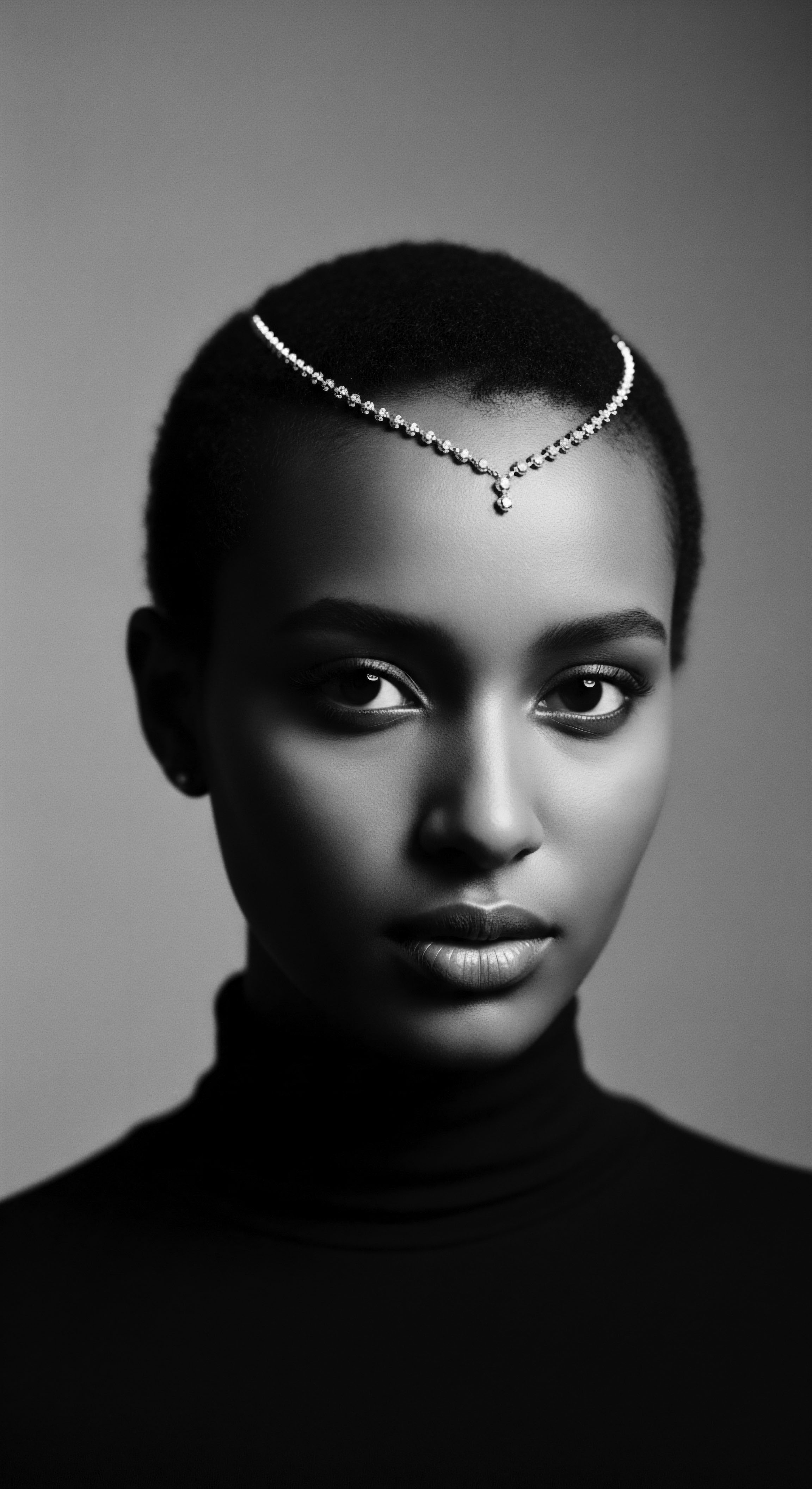
Hair Growth Cycles and Ancestral Influences
Modern science categorizes hair growth into distinct phases ❉ anagen (growth), catagen (transition), and telogen (resting). While ancient communities lacked this precise scientific terminology, their practices often supported healthy growth cycles. For example, traditional dietary habits, rich in locally sourced, unprocessed foods, naturally provided many of the vitamins and minerals now known to contribute to hair strength and vitality. The topical application of plant-based oils and clays would have contributed to scalp health, which in turn supports the hair follicle during its active growth phase.
Consider the use of garlic, documented in Berber traditions for its hair growth stimulating properties. While modern science attributes this to compounds like allicin, the ancestral wisdom was rooted in empirical observation of its effects. Similarly, practices that involved gentle manipulation and protective styling, rather than harsh treatments, would naturally minimize breakage, preserving length and density over time. This gentle touch, often seen in braiding and wrapping traditions, indirectly supported the longevity of each hair strand through its growth cycle.

Ritual
The tender thread of heritage connects us to the meticulous care and communal spirit that defined traditional North African grooming rituals. These practices were not isolated acts of vanity; they were integrated into daily life, special occasions, and collective identity. The legacy of these rituals, influencing techniques, tools, and transformations, offers profound lessons for modern textured hair health. They speak to a mindful engagement with our strands, a dedication that transcends mere function, elevating hair care to an art form passed down through generations.

Protective Styling Ancestral Roots
Protective styling, a cornerstone of modern textured hair care, finds deep resonance in North African heritage. For centuries, braids, twists, and wraps have served not only as aesthetic expressions but as pragmatic strategies to safeguard hair from environmental stressors and minimize manipulation. These styles preserved length and reduced breakage, allowing hair to thrive.
Tuareg women, for instance, known as the “blue people of the Sahara,” exemplify this practice. Their intricate braiding, often enhanced with aromatic pomades and fine black sand to impart luster, speaks to both beauty and protection in a harsh desert environment. The deliberate choice to cover and adorn hair, such as with headwraps, was not solely for modesty or aesthetic; it provided a physical shield against sun, wind, and dust, which can severely dehydrate and damage textured strands. This protective instinct, inherited from ancestors, remains relevant for maintaining modern hair health, especially for coils that are prone to dryness and friction.

How Did Ancient Hairstyles Preserve Hair Integrity?
Ancestral protective styles, in their very design, minimized exposure and friction. The braiding and wrapping techniques secured hair, reducing tangling and knotting that often leads to breakage. This contrasts sharply with some modern practices that, without proper care, can place undue stress on the hair shaft. The longevity of these styles also meant less frequent manipulation, allowing hair follicles a period of rest and reducing physical stress on the strands.
Ancient protective styles, such as those of the Tuareg, underscore a historical understanding of hair’s vulnerability, providing lessons in gentle care and minimal manipulation.
Historical accounts suggest that hair grooming was a significant part of social life. In many African cultures, including those influencing North Africa, hairstyles indicated age, marital status, wealth, and ethnic identity. The careful creation and maintenance of these styles, often taking hours, involved communal effort and reinforced social bonds while simultaneously caring for the hair itself.
| Aspect of Protection Physical Shield |
| Traditional North African Heritage Approach Headwraps and intricate braiding to guard against sun, dust, and harsh climates. |
| Modern Textured Hair Health Equivalent Satin bonnets, scarves, and hats for sleep and outdoor exposure. |
| Aspect of Protection Moisture Retention |
| Traditional North African Heritage Approach Application of argan oil, shea butter, and other plant-based emollients to seal in hydration. |
| Modern Textured Hair Health Equivalent Leave-in conditioners, sealing oils, and deep conditioning treatments. |
| Aspect of Protection Reduced Manipulation |
| Traditional North African Heritage Approach Styles like long-lasting braids and wraps, changed infrequently, allowing hair to rest. |
| Modern Textured Hair Health Equivalent Protective styles (box braids, twists, faux locs) to limit daily combing and styling. |
| Aspect of Protection The enduring wisdom reveals that fundamental principles of protection remain timeless, adapting through generations. |

Natural Styling and Definition Techniques
The pursuit of natural hair definition is not a modern invention. North African women have long utilized natural ingredients to cleanse, condition, and define their hair, allowing its inherent patterns to shine. Ghassoul Clay stands as a prime example, a mineral-rich earth from the Atlas Mountains.
When mixed with water, it transforms into a paste that cleanses without stripping natural oils, leaving hair soft and defined. Its ability to regulate sebum production and impart a silky feel demonstrates an ancient understanding of balance for the scalp and strands.
Another practice involves the use of henna , which not only imparts color but also coats the hair shaft, providing strength and a natural sheen. This natural coating can help reduce frizz and enhance curl patterns. Beyond these, the use of various oils—argan, olive, and even clarified butter in some North African regions—served to lubricate the strands, add weight, and promote natural curl clumping, leading to better definition and reduced tangles.

The Complete Textured Hair Toolkit
Traditional North African grooming was supported by a toolkit born from ingenuity and necessity. These tools, though simple, were highly effective in their application and reflected a gentle approach to hair care, especially vital for textured hair.
- Wooden Combs ❉ Crafted from natural materials, these combs with wide teeth would have been preferred for detangling, minimizing breakage compared to harsher alternatives. Their smooth surfaces allowed for gentle passage through coiled strands.
- Kessa Glove ❉ While primarily for skin exfoliation during the hammam ritual, the Kessa glove’s role in the broader beauty regimen speaks to a holistic approach where scalp health was understood to be intertwined with hair health. A clean, stimulated scalp provides a better environment for hair growth.
- Clay Bowls and Pestles ❉ Used for mixing and preparing natural ingredients like ghassoul clay or herbal concoctions, these tools ensured the purity and efficacy of treatments. This manual preparation underscored a direct, mindful connection to the natural elements.
The deliberate choice of these tools aligns with the philosophy of working with the hair’s natural inclinations, rather than against them. This patient, methodical approach is a powerful lesson from ancestral practices that resonates deeply with modern calls for gentle, low-manipulation hair care.
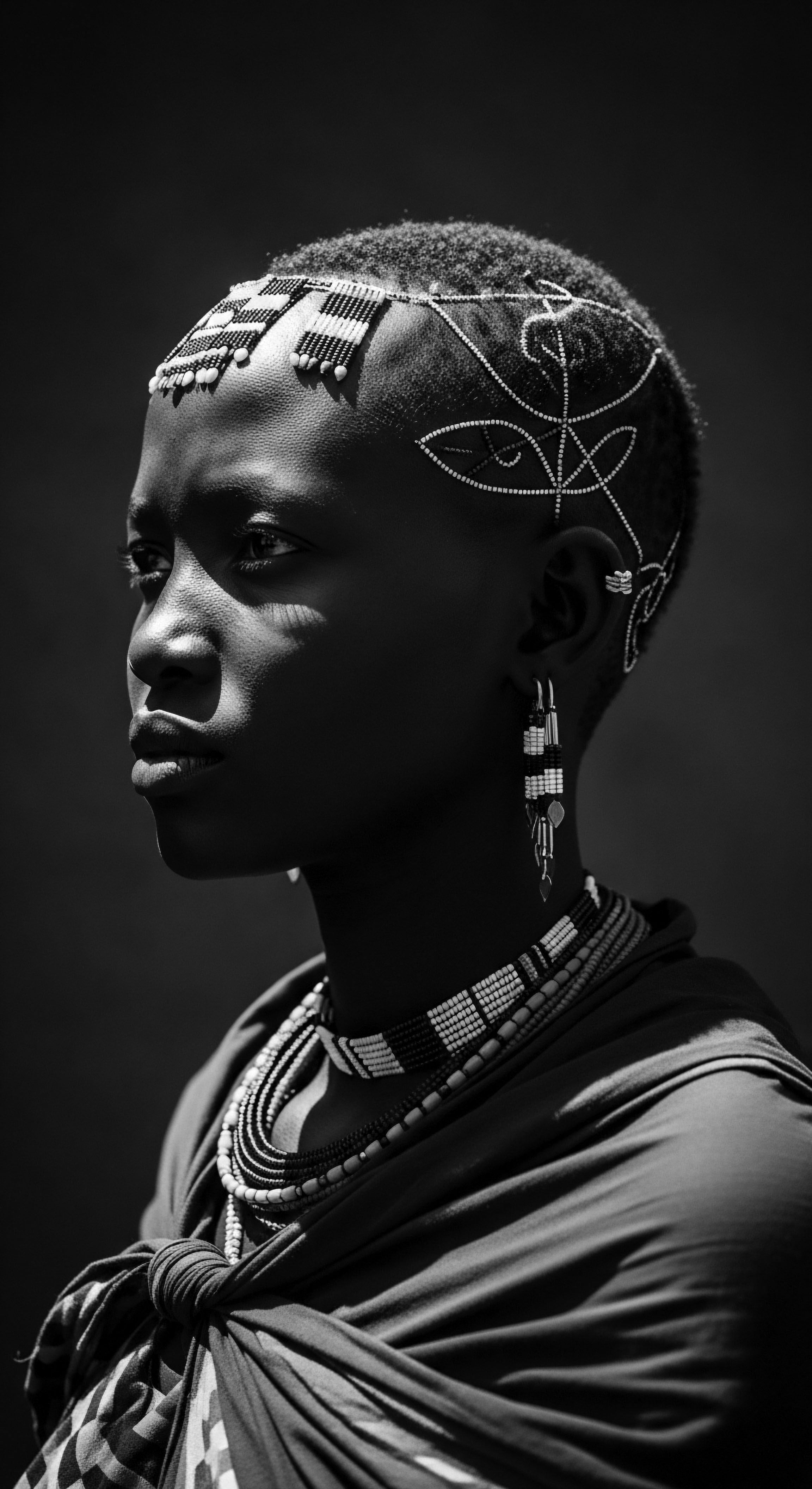
Relay
The enduring legacy of North African grooming rituals speaks to a profound connection between self-care and ancestral wisdom. These practices offer a unique lens through which to consider the holistic health of textured hair, moving beyond surface-level aesthetics to address deeper issues rooted in collective experiences. The knowledge passed down through generations provides a blueprint, not merely a collection of recipes, but a philosophy of care that honors the inherent resilience of textured hair. This journey into the past reveals how these traditions, when understood and adapted, can significantly uplift modern hair health.

Building Personalized Textured Hair Regimens
The strength of traditional North African grooming lies in its adaptability and reliance on locally sourced ingredients. While specific rituals may vary across regions, common threads emerge ❉ the emphasis on natural, potent components and a consistent, gentle approach. This foundation permits individuals to craft regimens tailored to their unique hair needs, much as their ancestors did. Observing how ingredients interacted with their environment and their specific hair types allowed for highly personalized care, long before the advent of mass-produced products.
Consider the variations in traditional practices, from the intense moisturizing needs addressed by argan oil in Morocco to the protective, length-retaining focus of chebe powder (though from Chad, the principle applies to broader African traditional care) used to prevent breakage in various African communities. These differences reflect an intuitive understanding of hair’s diverse requirements within varied climates and lifestyles. The ancestral practices invite us to listen to our hair, just as our forebears listened to the land, shaping a regimen that feels inherently right for the individual.
North African hair traditions demonstrate the power of personalized care, guiding us to create regimens that truly respect our unique textured hair.

What Historical Precedents Inform Modern Hair Problem Solving?
The wisdom of North African hair traditions provides historical precedents for addressing common textured hair concerns today. One such concern, prevalent for textured hair, is dryness. Traditionally, ingredients like shea butter and various plant-based oils (such as argan and olive oil) were applied to seal in moisture, providing a protective barrier against dehydration. This practice aligns with modern understanding of low porosity hair, which benefits from occlusive ingredients to retain hydration.
For scalp health, a common issue for many, ghassoul clay was and remains a cornerstone. Its ability to absorb impurities and regulate sebum, without stripping the scalp of essential oils, directly addresses concerns like oily scalp or product buildup. This ancestral remedy acts as a gentle cleanser and detoxifier, a principle that modern formulations often seek to replicate.
A study examining medicinal plants used in the Fez-Meknes region of Morocco noted that a significant majority of identified species were used in hair care, indicating a strong traditional emphasis on holistic hair and scalp wellness. This systematic reliance on botanicals for various hair ailments points to a deep, empirical knowledge base.
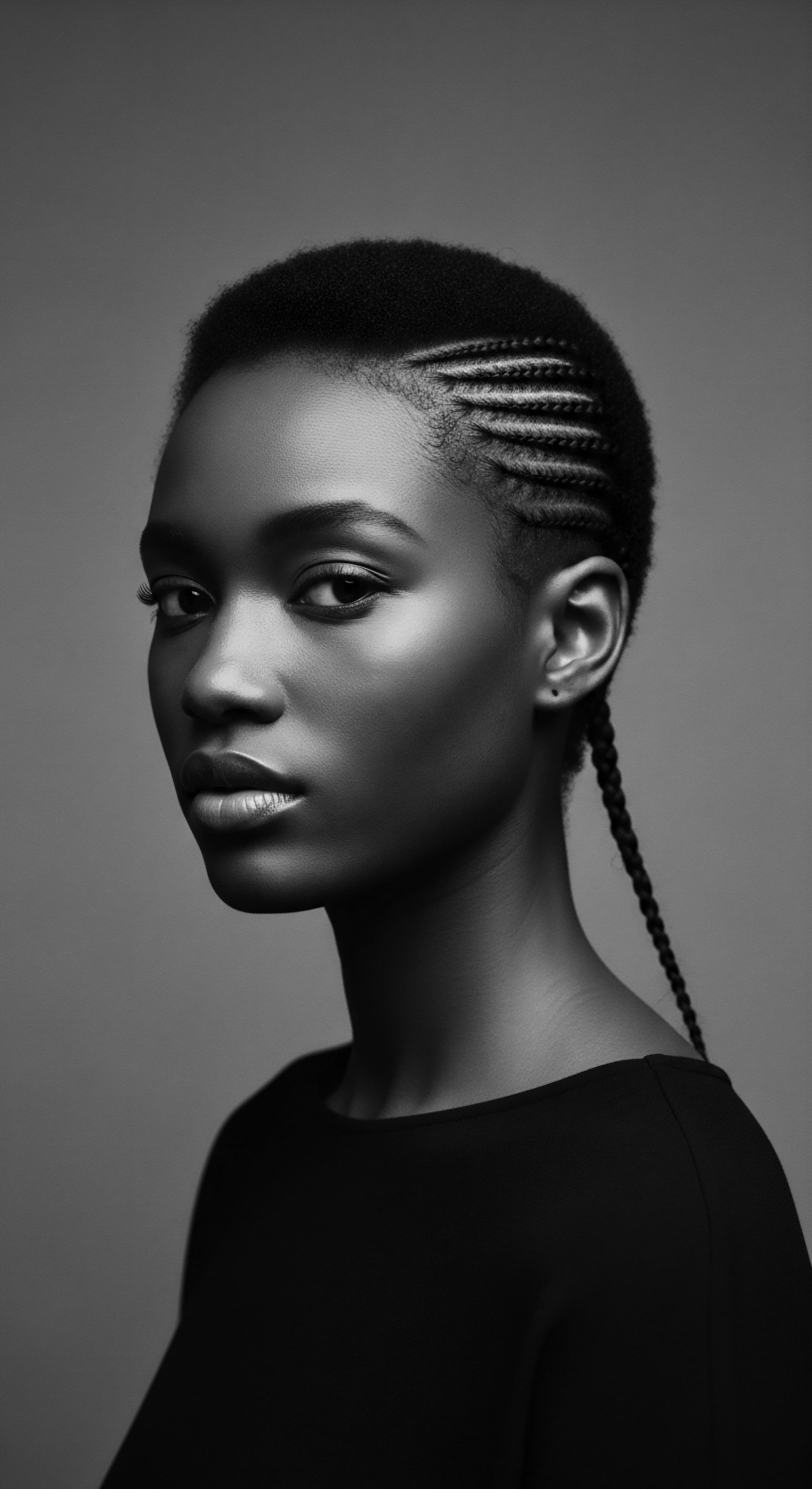
The Nighttime Sanctuary Essential Sleep Protection
The preservation of textured hair, particularly during sleep, has been an unspoken ritual across many Black and mixed-race communities for generations. While specific North African examples of modern-day bonnets are not widely documented, the spirit of protecting vulnerable hair during rest resonates deeply with the need to minimize friction and moisture loss. Ancestral practices involved carefully wrapped hair, often braided or twisted before bedtime, secured with soft cloths or head coverings. This foresight prevented tangles, preserved styles, and safeguarded the hair’s delicate structure, especially its ends.
The modern satin bonnet or silk pillowcase extends this ancestral wisdom into contemporary living. Satin and silk fabrics reduce friction, minimizing frizz and breakage that can occur from cotton pillowcases. They also help to retain the hair’s natural moisture, a critical element for textured strands prone to dryness. This continuation of protective nighttime habits represents a subtle, yet powerful, act of honoring hair heritage.
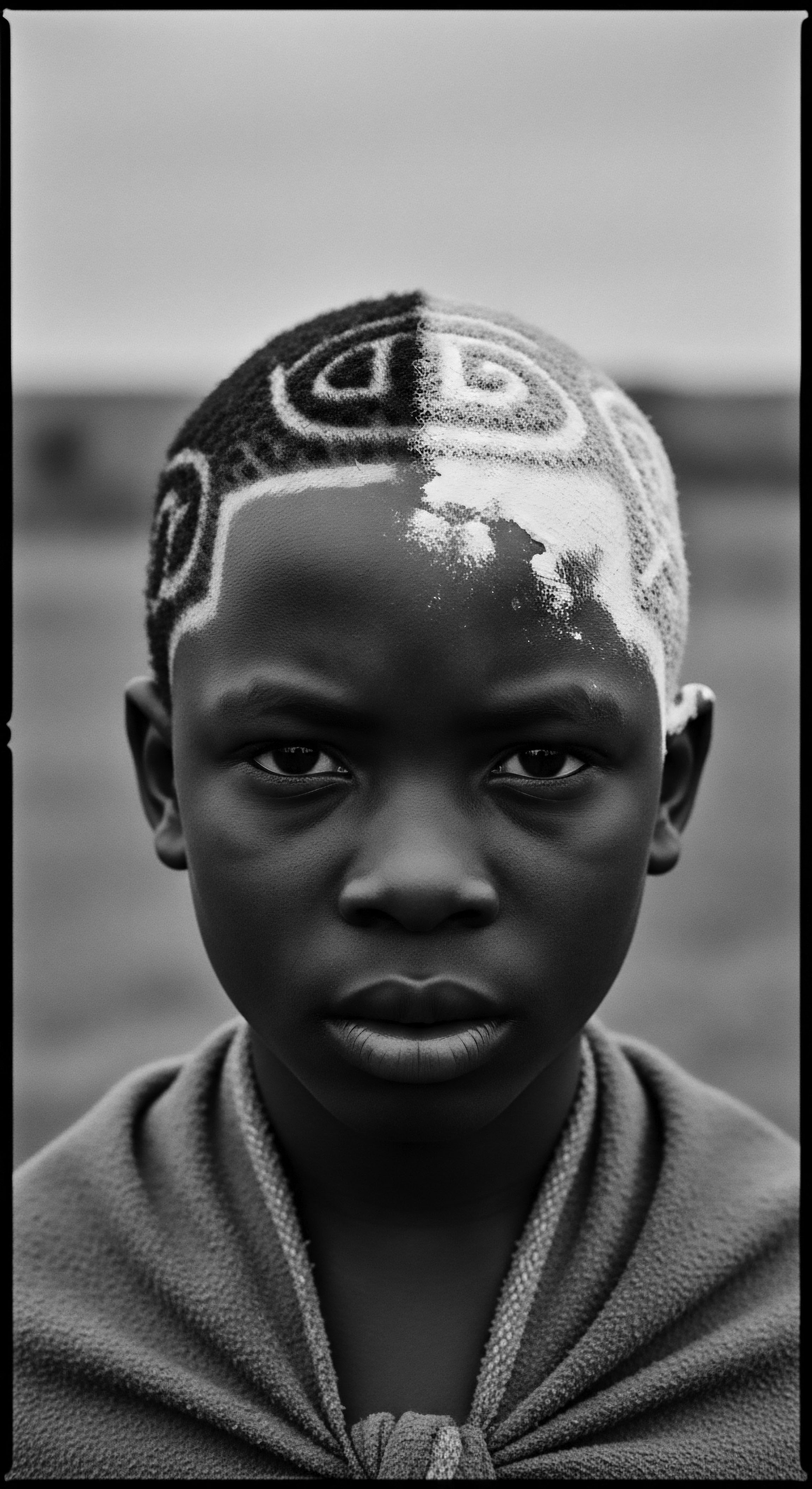
Ingredient Deep Dives for Textured Hair Needs
North African traditions present a treasury of ingredients, each with distinct properties that speak directly to the needs of textured hair. Their efficacy, validated by centuries of empirical use and increasingly by modern science, offers compelling reasons for their continued relevance.
Here, we consider a selection of these potent allies:
- Argan Oil (Argania spinosa) ❉ Originating from Morocco, this oil is a powerhouse for textured hair. It is rich in vitamin E, antioxidants, and fatty acids, particularly oleic and linoleic acids. These components help to moisturize, add shine, and reduce frizz without weighing down the hair. It penetrates the hair shaft, providing deep conditioning and strengthening.
- Ghassoul Clay ❉ Extracted from the Atlas Mountains, this unique saponiferous clay contains minerals like magnesium, silica, and calcium. It gently cleanses the hair and scalp, removing impurities and excess oil without stripping natural moisture, making it ideal for delicate textured hair. It also helps regulate sebum production and leaves hair soft and manageable.
- Henna (Lawsonia inermis) ❉ Beyond its use as a natural dye, henna, widely utilized across North Africa, conditions and strengthens the hair. It can help to coat the hair shaft, which may reduce breakage and contribute to a fuller appearance, while also offering some sun protection.
- Fenugreek (Trigonella foenum-graecum) ❉ While not exclusively North African, its use in some traditional African hair care speaks to its properties. Fenugreek seeds contain proteins and nicotinic acid, which are thought to stimulate hair growth and help with hair loss. Its mucilaginous properties provide slip, aiding in detangling and conditioning.
- Olive Oil (Olea europaea) ❉ A widespread ingredient in Mediterranean and North African regions, olive oil is a deeply moisturizing and conditioning agent. It helps to seal moisture into the hair, reduce frizz, and impart a healthy sheen.
- Shea Butter (Vitellaria paradoxa) ❉ Though primarily from West Africa, its prevalence in broader African-influenced hair care, including North African diaspora contexts, makes it relevant. Shea butter is exceptionally moisturizing due to its rich content of vitamins A and E, and essential fatty acids. It creates a protective barrier, sealing in moisture and reducing dryness and breakage.

Holistic Influences on Hair Health
The North African approach to beauty was rarely compartmentalized; hair health was deeply intertwined with overall well-being, reflecting a holistic philosophy. The hammam ritual, for instance, combined cleansing, detoxification, and relaxation, creating a synergy where the body and spirit were rejuvenated alongside the hair and skin. This understanding that external appearance reflects internal harmony is a cornerstone of ancestral wellness.
Many traditional hair care practices were not merely topical applications but were part of a wider lifestyle that contributed to health. Diets rich in local produce, limited exposure to harsh chemicals, and a communal context for self-care contributed to healthier hair and bodies. Research exploring African plants used for hair treatment has even found correlations between species used for hair conditions and those with antidiabetic potential when taken orally, suggesting a broader systemic benefit from some traditional botanical remedies.
This connection between local botanicals, traditional remedies, and systemic health underscores the integrated nature of ancestral wellness. The continuity of these heritage practices in modern life offers not just aesthetic improvements but a deeper connection to self-care as a legacy.
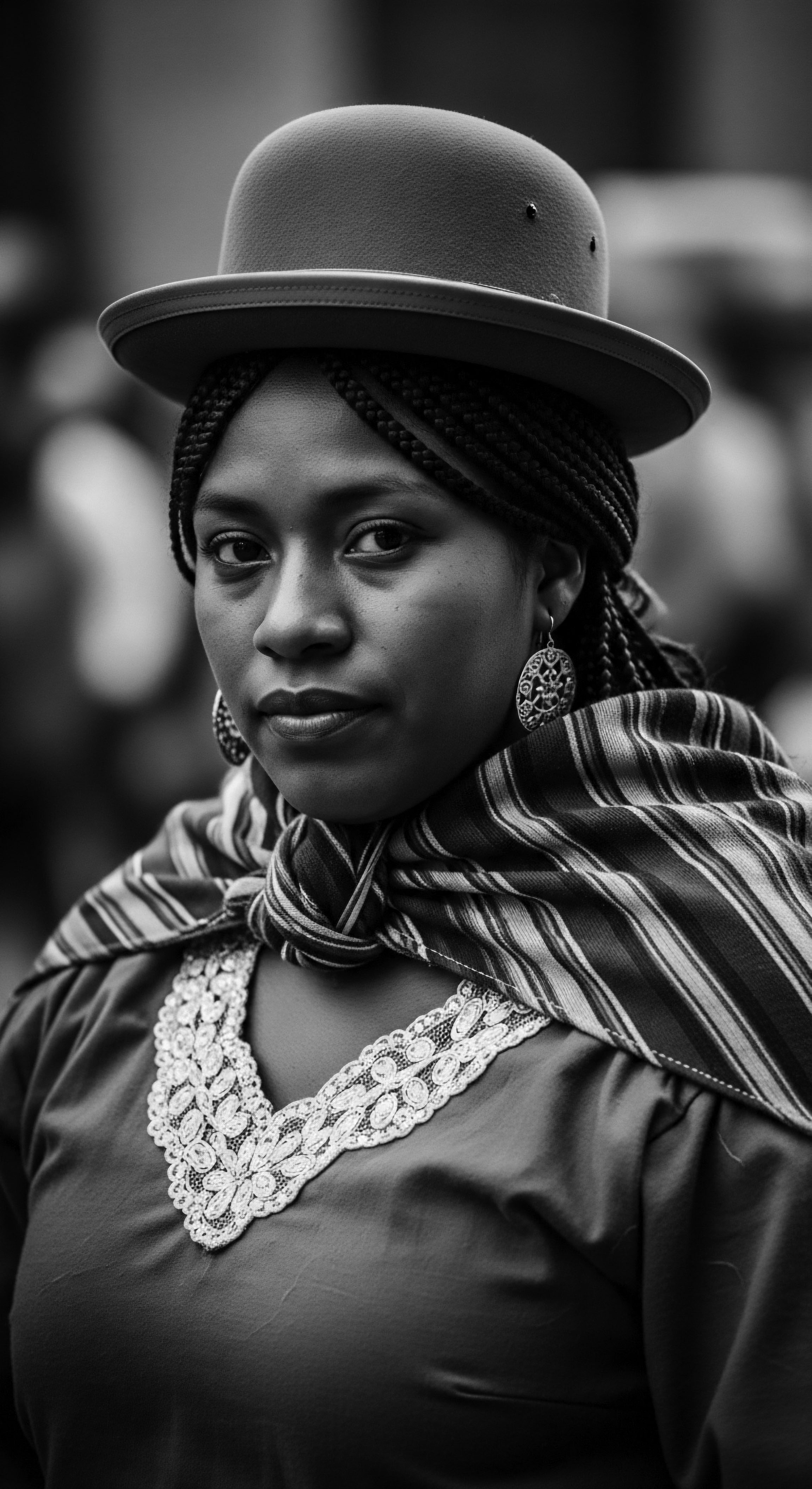
Reflection
The whisper of the winds across the Sahara, carrying scents of argan and ghassoul, reminds us that the quest for vibrant textured hair finds its deepest roots in the enduring wisdom of North African heritage. The question of whether these ancient grooming rituals can enhance modern hair health dissolves into a resounding affirmation. These are not relics to be admired from afar; they are living blueprints, carefully rendered by generations who understood the intimate connection between the earth’s bounty and the vitality of a strand.
To truly appreciate this legacy is to recognize that textured hair, in its myriad forms, carries not just genetic markers but also the indelible imprint of survival, resilience, and ingenuity. The careful anointing with ancestral oils, the gentle cleansing with earth’s clays, the patient crafting of protective styles—these are more than techniques. They are acts of self-reverence, inherited gestures that connect us to a continuous line of care.
In a world often driven by fleeting trends, the steady pulse of North African traditions calls us to a slower, more deliberate cadence, one that honors the past while enriching the present. Our hair, indeed, becomes a living archive, each curl and coil holding stories of resilience and the luminous wisdom of those who came before us.

References
- Byrd, A. D. & Tharps, L. D. (2001). Hair Story ❉ Untangling the Roots of Black Hair in America. St. Martin’s Press.
- El-Hilaly, J. Hmammouchi, M. & Lyoussi, B. (2003). Ethnobotanical studies and economic evaluation of medicinal plants in Taounate province (Northern Morocco). Journal of Ethnopharmacology, 86(2-3), 103-113.
- Jeddi, M. Benziane Ouaritini, Z. & Fikri-Benbrahim, K. (2021). Ethnobotanical study of medicinal plants in northern Morocco (Taounate) ❉ case of Mernissa. Ethnobotany Research and Applications, 21, 1-23.
- Lush. (2017, June 27). Beauty secrets of the past.
- Ouahibi, R. Bencheikh, A. & El Hajjaji, S. (2023). Ethnobotanical Survey of Medicinal Plants used in the Treatment and Care of Hair in Karia ba Mohamed (Northern Morocco). Annals of the Faculty of Sciences and Techniques, 23, 1-16.
- Salehi, B. Marzouk, O. B. & Rahdar, A. (2023). Cosmetopoeia of African Plants in Hair Treatment and Care ❉ Topical Nutrition and the Antidiabetic Connection? Cosmetics, 10(1), 16.
- Sofowora, A. (1993). Medicinal plants and traditional medicine in Africa. Spectrum Books Limited.
- Tahri, N. El Basti, A. Zidane, L. Rochdi, A. & Douira, A. (2012). Ethnobotanical study of medicinal plants in La province De Settat (Maroc). Kastamonu University Journal of Forestry Faculty, 12(2), 192–208.
